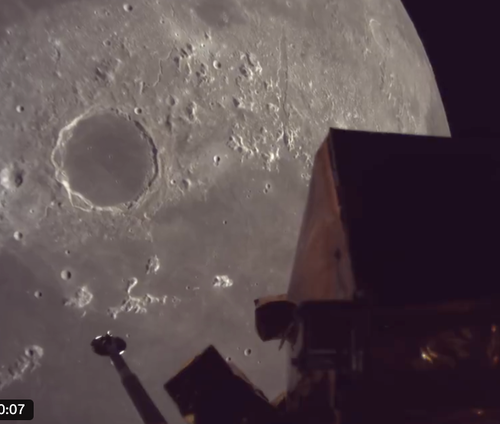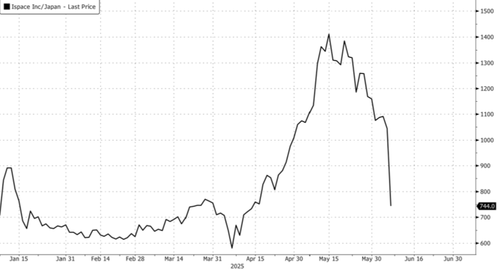Tokyo-based ispace Inc.’s second uncrewed lunar landing attempt ended in failure on Friday, as its Resilience lander crashed during the final descent phase. The lunar mishap marks another setback for the Japanese firm.
“As of 8:00 a.m. on June 6, 2025, mission controllers have determined that it is unlikely that communication with the lander will be restored and therefore completing Success 9 is not achievable. It has been decided to conclude the mission,” ispace wrote on X.
As of 8:00 a.m. on June 6, 2025, mission controllers have determined that it is unlikely that communication with the lander will be restored and therefore completing Success 9 is not achievable. It has been decided to conclude the mission.
“Given that there is currently no… pic.twitter.com/IoRUfggoiQ
— ispace (@ispace_inc) June 6, 2025
The mission, which was positioned as a pivotal moment for Japan’s entry into lunar exploration and a cornerstone for its commercial space ambitions, has sidelined moon missions from the company for now. The loss follows a failed 2023 mission due to a software error.
Meanwhile, Texas-based rivals Intuitive Machines Inc. and Firefly Aerospace Inc. have already achieved lunar landings. Firefly became the first private company to successfully land a functioning spacecraft on the moon in March, while Intuitive Machines managed a hard touchdown—but its lander lost functionality just hours later.
Ispace provided color on the sequence of events that led to the failed landing:
ispace engineers at the HAKUTO-R Mission Control Center in Nihonbashi, Tokyo, transmitted commands to execute the landing sequence at 3:13 a.m. on June 6, 2025. The RESILIENCE lander then began the descent phase. The lander descended from an altitude of approximately 100 km to approximately 20 km, and then successfully fired its main engine as planned to begin deceleration. While the lander’s attitude was confirmed to be nearly vertical, telemetry was lost thereafter, and no data indicating a successful landing was received, even after the scheduled landing time had passed.
Based on the currently available data, the Mission Control Center has been able to confirm the following: The laser rangefinder used to measure the distance to the lunar surface experienced delays in obtaining valid measurement values. As a result, the lander was unable to decelerate sufficiently to reach the required speed for the planned lunar landing. Based on these circumstances, it is currently assumed that the lander likely performed a hard landing on the lunar surface.
After communication with the lander was lost, a command was sent to reboot the lander, but communication was unable to be re-established.
In markets, iSpace shares in Tokyo crashed on Friday, closing down nearly 29%… What goes up must come down.
Earlier, Ispace CEO Takeshi Hakamada held a news conference following news of the failed landing attempt. He compared iSpace to SpaceX: “SpaceX has also failed several times, but now SpaceX occupies the launching market.”
Ispace CFO Jumpei Nozaki recently told CNN that the company has already secured funds for a third attempt at landing a craft on the lunar surface.
Loading…



















